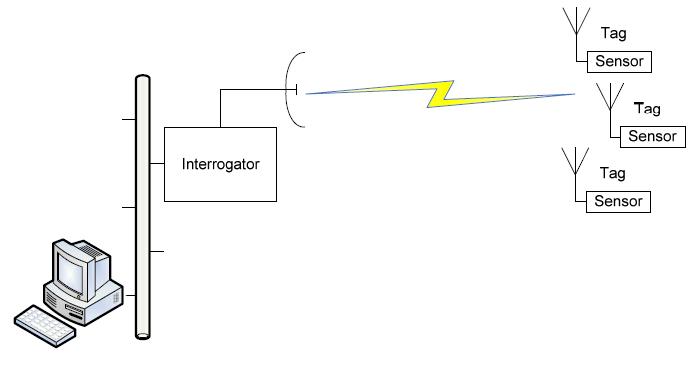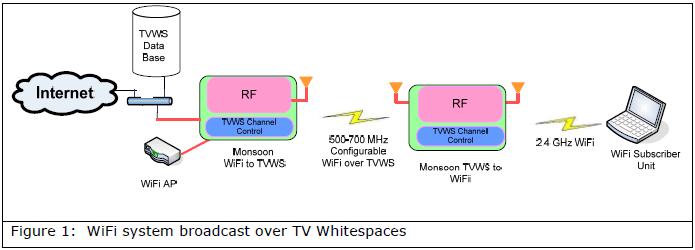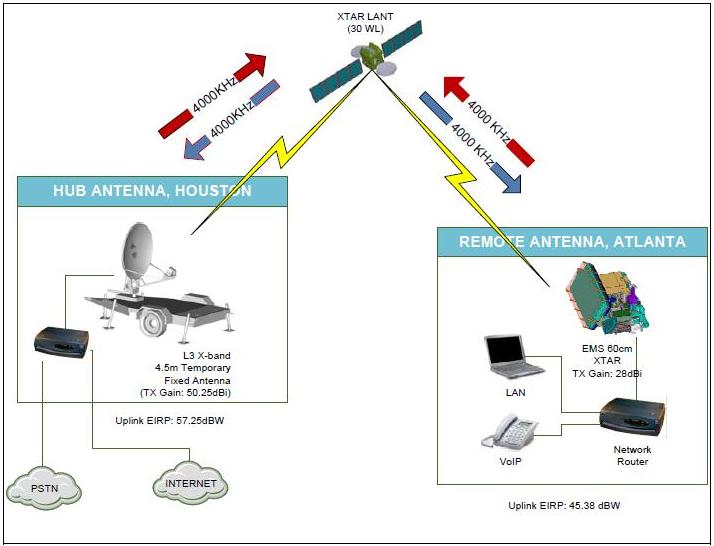Archive for the ‘Aviation’ Category
Thursday, June 3rd, 2010
This summarizes a selection of applications for the Experimental Radio Service received by the FCC during May 2010. These are related to WiMAX, sensors, SAW devices, radio-location, ultra-wideband, white space, aircraft passenger communications, landslide monitoring, collision avoidance radar, mobile DTV, LTE, Inmarsat handsets, highway rock-fall monitoring, HF communications, spacecraft link characterization, and interference into broadband access.
- Polytechnic Institute of NYU filed an application (with supporting exhibit) for experimental license to conduct a network research project using WiMAX on 2535-2540 MHz. This is part of the nationwide Global Environment for Network Innovations (GENI) project, a suite of infrastructure that will support experimental research in network science and engineering. GENI is supported by the National Science Foundation and managed by the GENI Project Office at BBN Technologies.
- Mnemonics, Inc. filed an application (with supporting exhibits) for experimental license to operate in support of a research project that is to develop and demonstrate the viability of wirelessly extracting measured data from a network of passive surface acoustic wave (SAW) sensor devices. This sensing technique is said to have several advantages over existing sensors, including no wired connections needed to extract data, no power requirements, operation up to 1000 degrees C., and sensor cost in-quantity in the tens of cents each. Operation will be on 915 MHz.

(more…)
Posted in Aviation, Business, DTV, Experimental, High Frequency, Interference, LTE, Military, Millimeter-wave, Public Safety, Radar, Radiolocation, Satellite, SAW, Sensors, Space Communications, Ultra-wideband | No Comments »
Tuesday, April 20th, 2010
This summarizes a selection of applications for the Experimental Radio Service received by the FCC during March 31 – April 15, 2010. These are related to WiMAX, unmanned aerial vehicles, radar, cellular networking, rural broadband, ultra-wideband, satellite, software defined radio, white space, adaptive networks, and amplitude companded side band.
- Clearwire filed an application for special temporary authority (with supporting exhibits) to test WiMAX equipment at various locations in California on 2502-2568 MHz. The purpose of the test is to validate the ability of equipment to operate satisfactorily in the presence of collocated equipment licensed to Sprint in the 800 and 1900 MHz bands.
- DataSoft Corporation filed an application (with supporting exhibit) for experimental license. The company says it is developing a Software Defined Radio platform featuring a configurable 400 MHz to 4000 MHz transceiver intended for markets requiring an adaptable, programmable, or cognitive radio such as TV white space, smart grid, and home networking. The experimental license is to support testing of the transceiver in a TV white space application. Due to lack of available white-space client devices, the applicant proposes using re-banded Wi-Fi equipment in the experiment. Operation is to be in Scottsdale, Arizona on 500-540 MHz.

- BAE Systems filed an application (with supporting exhibit) for experimental license to test a wireless link for use by the US Army between a soldier’s night weapon sight and night vision goggles. The wireless link will utilize WiMedia MB-OFDM Ultra-wideband technology. Operation is to be on 3.168-4.752 GHz.
- Honeywell filed an application (with supporting exhibits) for experimental license to test integration of a direct digital radio link into small unmanned aerial vehicles. This is in support of two US Army programs and one US Navy program. The radio is manufactured by AeroVironment, Inc. Both command and control, as well as video downlink, utilize the same radio. Frequency bands requested are 1711.5-1721.5 MHz and 1755-1848 MHz. Operation will be in Albuquerque and Rio Rancho, New Mexico.
- Texas Tech University Wind Science and Engineering Research Center filed an application (with supporting exhibit) for special temporary authority to operate a Ka-band mobile radar systems in support of tornado research. Operation is to be at 34.86 GHz.
- Kestrel Signal Processing filed an application for special temporary authority to allow “testing of a novel cellular network technology that is compatible with standard GSM cellular handsets.” The operation will be on the grounds of, and overlap in time with, the Burning Man event held near Gerlach, Nevada Aug. 30 – Sept. 6, 2010. Operation will be on 869-894 MHz and 1930-1945 MHz.
- CenturyTel Broadband Wireless filed an application for special temporary authority to assess the performance of equipment manufactured by IPWireless (but not yet FCC type accepted) for providing 700 MHz rural broadband service. Operation is to be at Monroe, Louisiana on 736-746 MHz.
- Inmarsat Hawaii filed an application (with supporting exhibit) for special temporary authority to initiate a program of experimentation designed to facilitate the introduction of a new Broadband Global Area Network (BGAN) user terminal type. The testing would attempt to gain knowledge with respect to link quality and to validate Inmarsat’s theoretical approach. Testing also would evaluate the interaction of the new terminal type with Inmarsat’s ground infrastructure. Inmarsat proposes to test the terminal type in the 1626.5- 1660.5 MHz transmit band and 1525.0-1559.0 MHz receive band.
- Cobham Defense Electronic Systems filed an application (with supporting exhibit) for experimental license to operate in Lowell, Massachusetts on various frequencies between 902 and 5925 MHz. Apparently, this is to be experimentation in support of the DARPA program Wireless Network after Next (WNaN). As the exhibit explains, the WNaN “program goal is to develop and demonstrate technologies and system concepts enabling densely deployed networks in which distributed and adaptive network operations compensate for limitations of the physical layer of the low-cost wireless nodes that comprise these networks. WNaN networks will manage node configurations and the topology of the network to reduce the demands on the physical and link layers of the nodes. The technology created by the WNaN effort will provide reliable and highly- available battlefield communications at low system cost.”
- Radio Design Group filed an application (with supporting exhibit) for experimental license to test a wireless intercom system that will utilize an Amplitude Companded Side Band (ACSB) RF platform. The applicant expects this to provide a stable and robust signal that is efficient in terms of transmission bandwidth and power. The applicant also expects this system to allow for an occupied bandwidth of 15 kHz per audio path including guard band. The system will be tested on 174-216 MHz and 470-512 MHz in the vicinity of Grants Pass, Oregon.
Posted in 3GPP, Antennas, Aviation, Cognitive Radio, Experimental, Infrastructure, Interference, Military, Radar, Satellite, Telemetry, White Space, WiMAX | No Comments »
Tuesday, April 6th, 2010
This summarizes a selection of applications for the Experimental Radio Service received by the FCC during March 15-30, 2010. These are related to weather radar, medical telemetry, RFID, satellite, aircraft telemetry, high-frequency direction finding, and meteorological telemetry.
- Fitness Foundation filed an application (with supporting exhibit) for experimental license to test wireless monitoring and reporting of people’s activity levels in support of an effort to combat obesity and promote active lifestyles. Operation is to be on 174-216 MHz and 512-700 MHz near Mt. Lebanon, Pennsylvania. FCC staff is concerned about the potential for interference to others and has asked the applicant why so much bandwidth is needed.
- Hyperion Technology Group filed an application (with supporting exhibit) for experimental license to support the development of a system capable of early detection of extreme weather phenomena, including wind shear, tornadoes and hurricane-spawned tornadoes. Operation is to be nationwide on 10.4-10.6 GHz. FCC staff questions this frequency selection, saying in correspondence to the applicant that there are two footnotes to the U.S Table of Allocations that are problematic. US58 prohibits pulsed emissions in 10-10.5 GHz. US59 prohibits any emission other than N0N in 10.5-10.55 GHz. Staff further observes that while experimental licenses are not always bound by allocation restrictions, there is great likelihood that NTIA would object to this application when it gets coordinated with government users. The applicant has suggested a compromise, and notes that the frequency range was selected based on the availability of relatively-inexpensive commercial off-the-shelf hardware for the initial research. Once the concept is validated and high-energy wind phenomena are better understood, it is the applicant’s intention to move to a different frequency and build custom hardware to support that frequency.
- David Miller (MIT) filed an application (with supporting exhibits) for experimental license to conduct testing of the CASTOR (Cathode/Anode Satellite Thruster for Orbital Repositioning) satellite. The intent is to validate the performance and application of Diverging Cusped Field Thruster (DCFT) technology. According to the Miller, this will be achieved by taking on-orbit state data to compare the degradation experienced by the DCFT to that of similar technologies such as Hall thrusters. In order to measure the thruster’s on-orbit performance, efficiency, and degradation, it is necessary to transmit sensor data and pictures obtained from an onboard camera to a ground station. Operation is to be in low-earth orbit (700-3000 km) on 2.4000-2.4835 GHz.
- Northrop Grumman filed an application (with supporting exhibit) for special temporary authority for the purpose of developing an airborne platform with a microwave transmitter to fulfill a contract with the US Air Force. The requested frequency band is 2250-2260 MHz.
- The University of Washington filed an application for special temporary authority to operate on 433.845-433.995 MHz from free-flying balloons launched in Washington State. This is to support, as part of a class project, research in atmospheric structure using a transmitter as a sounder to make atmospheric temperature profiles and as a beacon to recover the transmitter.
- Keurig, Inc. filed an application for special temporary authority to operate RFID technology on 902-928 MHz. Keurig is a vendor of single-cup beverage brewing systems. Its new Keurig B80K home-based brewers will use new beverage identification technology implemented with RFID. In the system, “K-Cups” containing the beverage powder are embedded with RFID tags. The brewers identify the type of K-Cup used and adjust brewing parameters to match the beverage. Prior to design finalization of the brewer, Keurig wants to conduct consumer acceptance testing with 300 brewers in the field.
- Ticom Geomatics filed an application (with supporting exhibit) for experimental license to operate on various high frequencies in the 2-30 MHz range for test and development of direction finding techniques. As part of a US Navy contract, the company is extending high-frequency groundwave geolocation techniques to include skywave and near vertical incidence skywave (NVIS) signals. This work will include enhancements to a groundwave/skywave discriminator, extensions to include ionospheric modeling, and geolocation and error model enhancements.
Posted in Aviation, Experimental, High Frequency, Military, Radar, Radiolocation, RFID, Satellite, Telemetry | No Comments »
Monday, March 22nd, 2010
This summarizes a selection of applications for the Experimental Radio Service received by the FCC during February 27 – March 14. These are related to smart grid, antennas, radar, military, satellite, data links, roaming services, maritime communications, WiMAX, network protocols, and UAVs.
- Sensus Spectrum filed an application (with supporting exhibit) for special temporary authority to test European Advanced Metering Infrastructure (AMI) equipment on 412-424 MHz.
- The University of Colorado filed an application (with supporting exhibit) for special temporary authority to test the feasibility of synthetic aperture radar in an end-fire configuration. This configuration will output short (50ns) bursts of approximately 10W at 500-530 MHz in order to construct an image of objects in an adjacent parking lot. This is an attempt to prove the feasibility of a new radar configuration for a proposal to NASA.
- Oceanit filed an application for special temporary authority for a Ku-band SATCOM transmission test with an experimental ground-based phased-array antenna. Operation is to be on 13.75-14.50 GHz.
- Northrop Grumman filed an application (with supporting exhibit) for special temporary authority to test an electronically-scanned-array radar system intended to act as part of a missile interceptor system to protect against rocket, artillery and mortar threats. Operation is to be on 16.2-17.3 GHz.
(more…)
Posted in Antennas, Aviation, Experimental, Military, Network Protocols, Radar, Satellite, Smart Grid, Telemetry, Video, WiMAX | No Comments »
Monday, March 1st, 2010
This summarizes a selection of applications for the Experimental Radio Service received by the FCC during February 21-26: radar, WiMAX, MVDDS, aeronautical communications, private mobile data, millimeter wave, high-frequency data, space communications, and radiolocation.
- The Maryland Department of the Environment filed an application (with supporting exhibits) to operate a wind-profiling radar on 915 MHz. The equipment was developed by the National Oceanic and Atmospheric Administration (NOAA) and fabricated by Radian International. The antenna is to consist of one steerable four-panel micro-patch phased array.
- DTV Norwich filed an application (with supporting exhibit) for special temporary authority to conduct propagation tests prior to potential full-scale deployment of Multichannel Video and Data Distribution Service (“MVDDS”) at 12.2 to 12.7 GHz in the Miami area. This is to determine the suitability of potential transmitter sites for full-scale operation, for which DTV Norwich has a license.
(more…)
Posted in Aviation, Experimental, High Frequency, Millimeter-wave, MVDDS, Private Radio, Radar, Radiolocation, Space Communications, Telemetry, Video, WiMAX | No Comments »
Sunday, February 21st, 2010
This summarizes a selection of applications for the Experimental Radio Service received by the FCC during February 13-20: landslide monitoring, WiMAX, earth-station antennas, radar, military mobile data, automatic aircraft landing, psyops transmission.
- Skyport Global Communications filed an application (with supporting exhibits) to test a 55cm slot-array X-band antenna manufactured by EMS Technologies on 8218-8400 MHz. The test will be done using a satellite link between the 55cm antenna in Atlanta, Georgia and a hub in Houston, Texas using the XTAR LANT X-band satellite.

(more…)
Posted in Antennas, Aviation, Experimental, Military, Millimeter-wave, Radar, Satellite, Terminals, WiMAX | No Comments »